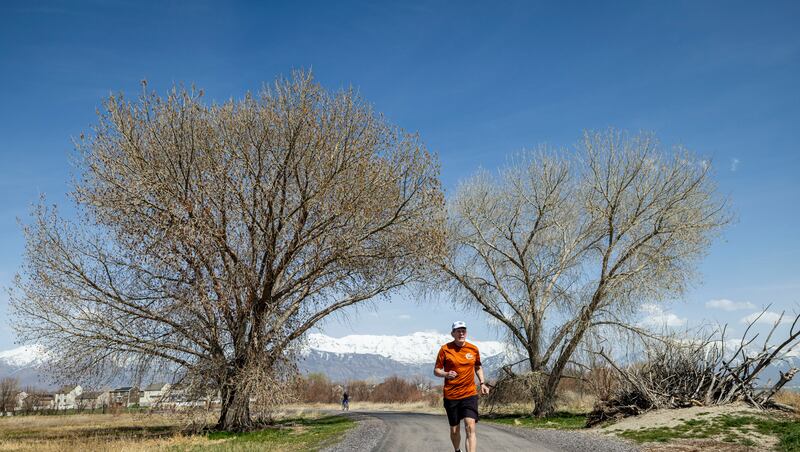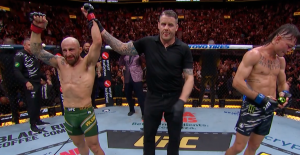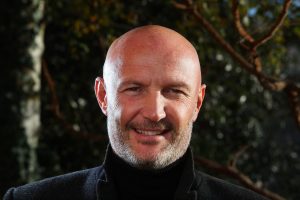
|
Isaac Hale, Deseret News
I’m going to meet Davy Crockett — that’s his real name — on a trail at the north end of Utah Lake. It’s not the wild frontier, but he is the king in these parts. He’s the ultrarunning man. He has run 109 100-mile races. He is the 15th person in the world to finish 100 races at that distance. He is the foremost historian of his sport in the U.S. How he has time to pause for an interview is beyond me. I throw my running shoes in the car.
Turns out Crockett isn’t Forrest Gump crisscrossing the country nonstop, though he does have a (virtual) following.
At age 66 and coming off two knee replacements, he only runs when he gets the urge. Even when he trained more vigorously, he ran just two or three times a week on a mileage base built up over 20 years. He doesn’t have to run as often to stay fit, as long as he runs or hikes far — like 25 to 30 miles far.

|
Isaac Hale, Deseret News
This day is not one of those days. He has a 100-plus-mile bike ride planned for the next day. I don’t need running shoes after all. We walk and talk under a clear blue sky as the water laps against the path and frogs croak in the marsh.
So what exactly is an ultramarathon? It’s a footrace that’s longer than a traditional 26.2-mile marathon. Typical distances include 50K (31 miles), 100K (62 miles), 50 miles and 100 miles. And there are also some insanely longer endurance races like the Moab 25 and the Cocodona 250. Races usually take place on unpaved trails and roads and go up and down mountains.
Are you crazy?
People ask Crockett, who is retired from a career in IT and lives in Saratoga Springs, all kinds of questions when they learn he runs 100-mile races: Do you sleep? Does it hurt? Are you crazy? And, of course, why?
“You run 100 miles, that’s kind of beyond people’s understanding because so many people think the marathon distance is really the limit to human endurance. But all that is just some silly magic number. Certainly you can go further,” he told me, wearing a rust-colored shirt bearing the logo of the Pony Express ultramarathon he started in 2006.
Yes, ultrarunners get drowsy. (Crockett sometimes sings ‘70s tunes out loud to keep himself awake.) Yes, it does hurt at times. (But he got to the point where he could recover in three days.) Yes, you have to be a little bit crazy. (He almost entered the grueling and secretive Barkley Marathons but “sanity came upon me.”)
And the why comes down to the proverbial answer for climbing a mountain.
“There’s never really a good answer as to why,” said Crockett, a soft-spoken man not known to trumpet his accomplishments but who possesses a dry wit. “It’s kind of like why do you climb to the top of a mountain? Well, it’s there. To run 100 miles is because I can do it.”
But he couldn’t always do it.
In 2002, Crockett was a 230-pound “couch potato” in the midst of a midlife crisis. He couldn’t get down on the ground to play with his kids. He lagged behind his buddies on their annual backpacking trip. Running a mile or two for a couple of weeks to prepare for the trip didn’t help much, so he decided to try something different.
Instead, he hiked Mount Timpanogos, a 14-mile roundtrip with 4,800 feet of elevation gain. It took 10 1/2 hours. That younger hikers made fun of his tortoise pace didn’t sit well. After the backpacking trip, he forced himself to hike Timp again. He was stunned that he cut his time in half.

|
Isaac Hale, Deseret News
“That started my fitness wake-up call,” Crockett said.
For the next two years, he was into fast-pace hiking. During an internet search for a hiking club, he stumbled across ultrarunning. He’d never heard of the sport. “I thought it was just a bunch of crazy people that were running on pavement up in the mountains,” he said. “I was partially right. They were crazy people but they run on trails.”
He entered a couple of 50K races, finishing dead last in one. He entered a 100K race and the 100-mile Bear 100 in 2004, finishing neither. He limped away discouraged and in over his head.
After healing from some overuse injuries, though, he learned how to train and lose weight. He turned himself into a runner rather than a hiker. In 2005, he finished two 100-milers, including the Bear 100. And he was hooked.

|
Isaac Hale, Deseret News
My obsession
“It became somewhat of an obsession,” Crockett said.
For a stretch, he was running 10 to 12 100-milers a year, often fueled by Reese’s Peanut Butter Cups and bacon. He has tailed off in recent years. He finished his 109th at that distance last year in the aptly named Dreadmill 100 — a competitive virtual 100-mile race on a treadmill — something he has done five times. He once broke his hand so badly in a fall during a race that it required surgery. But he finished.
In the past 20 years, Crockett has won more than a dozen 100-milers and placed high in many others. His times range from about 19 hours to 36 hours, depending on the course and terrain. He didn’t finish about 20. He also got into fixed-time racing, an event where the winner is the person who runs the furthest. He won a 48-hour race, totaling 187 miles. He’s always recognizable on a course at night because he’s the only racer with a green light.
Long races often leave room for shenanigans.
Ultrarunner Phil Lowry said Crockett always went out too fast at the start of a race but Lowry would quickly catch him. At the Wasatch 100 one time, he said Crockett hid behind a tree — “I don’t know whether he was frustrated or whether he was just in a mood that day” — and jumped out and “scared the crap out of me.”
“That started a yearslong, not a feud, but it was a line of practical jokes,” said Lowry, who lives in Issaquah, Washington.
Crockett did his best to not let his obsession overtake his family life during the peak of his running career. As a married father of six with a full-time job and service in his church, he already had a packed schedule. He arose very early in the morning on weekdays, sometimes going up and down Timp before catching the bus to work. On Saturdays, he got up at 2 a.m. and was home by noon. He found solace running in the peaceful darkness before dawn.
He came up with a way, though, to keep families involved in a sport that doesn’t lend itself to spectating. Sitting around for hours waiting for a runner to come past or reach a checkpoint isn’t too exciting. He requires runners in his Pony Express races to have a vehicle crew, typically made up of family members.
There was a time where running defined him, but that’s not the case now that he has slowed with age. His influence, though, still permeates the sport.

|
Isaac Hale, Deseret News
Forget a marathon
Craig Lloyd met Crockett in the most serendipitous way. In 2003, he hiked Utah’s three highest peaks — Kings, South Kings and Gilbert — in one day, a feat dubbed the “triple crown” in a Deseret News article.
Six years later, as Lloyd set out to hike Kings Peak again, he saw a “crazy guy named Davy Crockett” had written in the trailhead registry that he had run the “triple crown” for his 50th birthday two days earlier.
Intrigued, Lloyd stalked Crockett on the internet and found his blog, where he had cited the 2003 Deseret News story and mentioned Lloyd by name. Lloyd messaged Crockett, who promptly invited him on a run. Lloyd wasn’t a runner at the time but had started training with plans to run a marathon. Crockett told him to forget a marathon and do an ultramarathon, reasoning if he could do 26 miles, he could do 31 or 50K. They ran around Lake Mountain in Utah County.
“He remained a good friend and running mentor for me ever since,” said Lloyd, who has now run 17 100-milers and numerous ultramarathons. “My running career is very much tied to him and his influence.”
Among the lessons he learned from Crockett is the level of commitment it takes to be good at what is inherently a selfish sport. Running takes time from family and work but teaches resilience and stick-to-it-iveness that most people don’t know they have inside of them, he said.
Crockett also taught him that no matter how tired or beaten down you are in a race, if you stop and take a break, you’ll feel better and be able to finish.
“I’ve applied that more often in my life than I have even in running,” Lloyd, 52, said.

|
Isaac Hale, Deseret News
Going solo
Though Crockett devoted years to racing, his real passion is solo adventure running.
“When I would drive down I-15, my eyes would always be gazing up at the ridges, plotting in my head. I think I could run that ridge. It looks kind of flat up at the top; there’s probably a road up there or something. So, I would invent these different 50-milers,” Crockett said.
Rather than going to the top, he found a way to run around Mount Timpanogos or Mountain Nebo or the San Pitch Mountains without ever scouting them in advance. Some of them were more than 50 miles, some less, but all self-supported.
“It’s nature. It’s discovering new places,” he said, trying to explain the why.
Some routes he didn’t have to invent, like running the Grand Canyon rim to rim to rim, a 48-mile trip with about 10,000 feet of elevation gain. He did it so many times that he put in about 1,000 miles in that canyon alone.
Lowry has done what he prefers to call the Grand Canyon double cross (same as rim to rim to rim) 31 times, but he’s most impressed with Crockett’s 100-miler in and around the canyon.
“He’s been all over that canyon. He’s the only person I know who knows the canyon better than I do,” he said of Crockett, who has written a book about Grand Canyon running.
And that Mount Timpanogos hike that first got Crockett off the couch? He once went up and down it six times in a row over about 30 hours. His fastest time top to bottom is a shade over three hours.
Crockett used to record his annual mileage but stopped a few years ago when the cumulative total hit 41,450. He figures he’s up to about 50,000 now. That’s equivalent to running around the circumference of Earth two times or running across the U.S. 17 times.
Mileage might be the one thing he doesn’t keep track of anymore.

|
Isaac Hale, Deseret News
Ultra writing man
Crockett is a prolific blogger. You can find out more about him than you ever wanted to at Davy Crockett’s Running Frontier blog. The tagline is “I Like to Run Insanely Long & Crazy Distances.” Nearly every one of his thousands of miles is documented, and that’s only a slight exaggeration. He writes about his adventures in great detail. The high and lows, the sad and sweet, the funny and scary, the do’s and don’ts. It’s all there.
A longtime history buff, he has hosted the “Ultrarunning History” podcast since 2018, totaling more than 170 episodes and 4 million downloads to date. He has converted 13 of those podcasts into books. The one about the Grand Canyon is his bestseller. There’s no one in the United States more knowledgeable about ultrarunning history than Crockett.
Most people think ultrarunning started in the 1970s, but he traces it back to the 1880s, when long-distance runners were called “pedestrians.” An event at Madison Square Garden, which opened in 1879, featured runners doing laps around the arena for six days while thousands of spectators bet on them like they were race horses. A lot of money exchanged hands, Crockett said.
He oversees the American Ultrarunning Hall of Fame, established by the American Running Association in 1990 but dissolved in 2020. After consulting with others in the sport, he inducts two runners a year. It has 26 members. Crockett isn’t one of them. Asked about his own induction, he said “never,” ticking off the accomplishments of those in the hall. “The bar is high,” he said.
Lowry, who serves as legal counsel for Crockett’s “Ultrarunning History,” said he and Crockett have a “friendly argument” about whether a verified solo run under 48 hours should be counted as a career 100-miler. Lowry said it should because technology today allows easy verification. Crockett associates it with an organized race.

|
Isaac Hale, Deseret News
“We are continuing to have the feud. I suspect we’ll probably have to compromise,” Lowry said.
Lowry, 58, is one shy of 100 100-milers, though not all of them were in organized races. He’s also run 16 200-milers, so should those count as two?
“I just finished my 99th 100, so it’s going to come to a head soon because I’m going to start telling people I’ve done a hundred,” said Lowry, who’s headed to Arizona to run the Cocodona 250 next month.
Davy, Davy Crockett
Perhaps there can’t be a story written about a man named Davy Crockett without talking about his name. I ask him about it as we reach the end of the trail along the lake.
He recently went on the “Miles with Marty” podcast, focused mostly on ultrarunning. The episode is titled, “Davy Crockett, the runner, not the ‘the king of the wild frontier.‘”
Lyrics from the old song “The Ballad of Davy Crockett,” where that phrase comes from, might even be applicable: “Off through the woods he’s marchin’ along, Makin’ up yarns and singin’ a song” or “From grassy plains to the mountain crest, He’s ahead of us all meetin’ the test, Followin’ his legend into the west.”
Growing up, Crockett was Davy and later Dave or David. But he embraced Davy Crockett when he started running.
“I wore a coonskin hat at a race and I discovered people knew who I was,” he said. “So I decided as a marketing ploy to start using Davy Crockett.”
And a legend was born.

|
Isaac Hale, Deseret News
I’m going to meet Davy Crockett — that’s his real name — on a trail at the north end of Utah Lake. It’s not the wild frontier, but he is the king in these parts. He’s the ultrarunning man. He has run 109 100-mile races. He is the 15th person in the world to finish 100 races at that distance. He is the foremost historian of his sport in the U.S. How he has time to pause for an interview is beyond me. I throw my running shoes in the car.
Turns out Crockett isn’t Forrest Gump crisscrossing the country nonstop, though he does have a (virtual) following.
At age 66 and coming off two knee replacements, he only runs when he gets the urge. Even when he trained more vigorously, he ran just two or three times a week on a mileage base built up over 20 years. He doesn’t have to run as often to stay fit, as long as he runs or hikes far — like 25 to 30 miles far.
This day is not one of those days. He has a 100-plus-mile bike ride planned for the next day. I don’t need running shoes after all. We walk and talk under a clear blue sky as the water laps against the path and frogs croak in the marsh.
So what exactly is an ultramarathon? It’s a footrace that’s longer than a traditional 26.2-mile marathon. Typical distances include 50K (31 miles), 100K (62 miles), 50 miles and 100 miles. And there are also some insanely longer endurance races like the Moab 25 and the Cocodona 250. Races usually take place on unpaved trails and roads and go up and down mountains.
Are you crazy?
People ask Crockett, who is retired from a career in IT and lives in Saratoga Springs, all kinds of questions when they learn he runs 100-mile races: Do you sleep? Does it hurt? Are you crazy? And, of course, why?
“You run 100 miles, that’s kind of beyond people’s understanding because so many people think the marathon distance is really the limit to human endurance. But all that is just some silly magic number. Certainly you can go further,” he told me, wearing a rust-colored shirt bearing the logo of the Pony Express ultramarathon he started in 2006.
Yes, ultrarunners get drowsy. (Crockett sometimes sings ‘70s tunes out loud to keep himself awake.) Yes, it does hurt at times. (But he got to the point where he could recover in three days.) Yes, you have to be a little bit crazy. (He almost entered the grueling and secretive Barkley Marathons but “sanity came upon me.”)
And the why comes down to the proverbial answer for climbing a mountain.
“There’s never really a good answer as to why,” said Crockett, a soft-spoken man not known to trumpet his accomplishments but who possesses a dry wit. “It’s kind of like why do you climb to the top of a mountain? Well, it’s there. To run 100 miles is because I can do it.”
But he couldn’t always do it.
In 2002, Crockett was a 230-pound “couch potato” in the midst of a midlife crisis. He couldn’t get down on the ground to play with his kids. He lagged behind his buddies on their annual backpacking trip. Running a mile or two for a couple of weeks to prepare for the trip didn’t help much, so he decided to try something different.
Instead, he hiked Mount Timpanogos, a 14-mile roundtrip with 4,800 feet of elevation gain. It took 10 1/2 hours. That younger hikers made fun of his tortoise pace didn’t sit well. After the backpacking trip, he forced himself to hike Timp again. He was stunned that he cut his time in half.
“That started my fitness wake-up call,” Crockett said.
For the next two years, he was into fast-pace hiking. During an internet search for a hiking club, he stumbled across ultrarunning. He’d never heard of the sport. “I thought it was just a bunch of crazy people that were running on pavement up in the mountains,” he said. “I was partially right. They were crazy people but they run on trails.”
He entered a couple of 50K races, finishing dead last in one. He entered a 100K race and the 100-mile Bear 100 in 2004, finishing neither. He limped away discouraged and in over his head.
After healing from some overuse injuries, though, he learned how to train and lose weight. He turned himself into a runner rather than a hiker. In 2005, he finished two 100-milers, including the Bear 100. And he was hooked.
My obsession
“It became somewhat of an obsession,” Crockett said.
For a stretch, he was running 10 to 12 100-milers a year, often fueled by Reese’s Peanut Butter Cups and bacon. He has tailed off in recent years. He finished his 109th at that distance last year in the aptly named Dreadmill 100 — a competitive virtual 100-mile race on a treadmill — something he has done five times. He once broke his hand so badly in a fall during a race that it required surgery. But he finished.
In the past 20 years, Crockett has won more than a dozen 100-milers and placed high in many others. His times range from about 19 hours to 36 hours, depending on the course and terrain. He didn’t finish about 20. He also got into fixed-time racing, an event where the winner is the person who runs the furthest. He won a 48-hour race, totaling 187 miles. He’s always recognizable on a course at night because he’s the only racer with a green light.
Long races often leave room for shenanigans.
Ultrarunner Phil Lowry said Crockett always went out too fast at the start of a race but Lowry would quickly catch him. At the Wasatch 100 one time, he said Crockett hid behind a tree — “I don’t know whether he was frustrated or whether he was just in a mood that day” — and jumped out and “scared the crap out of me.”
“That started a yearslong, not a feud, but it was a line of practical jokes,” said Lowry, who lives in Issaquah, Washington.
Crockett did his best to not let his obsession overtake his family life during the peak of his running career. As a married father of six with a full-time job and service in his church, he already had a packed schedule. He arose very early in the morning on weekdays, sometimes going up and down Timp before catching the bus to work. On Saturdays, he got up at 2 a.m. and was home by noon. He found solace running in the peaceful darkness before dawn.
He came up with a way, though, to keep families involved in a sport that doesn’t lend itself to spectating. Sitting around for hours waiting for a runner to come past or reach a checkpoint isn’t too exciting. He requires runners in his Pony Express races to have a vehicle crew, typically made up of family members.
There was a time where running defined him, but that’s not the case now that he has slowed with age. His influence, though, still permeates the sport.
Forget a marathon
Craig Lloyd met Crockett in the most serendipitous way. In 2003, he hiked Utah’s three highest peaks — Kings, South Kings and Gilbert — in one day, a feat dubbed the “triple crown” in a Deseret News article.
Six years later, as Lloyd set out to hike Kings Peak again, he saw a “crazy guy named Davy Crockett” had written in the trailhead registry that he had run the “triple crown” for his 50th birthday two days earlier.
Intrigued, Lloyd stalked Crockett on the internet and found his blog, where he had cited the 2003 Deseret News story and mentioned Lloyd by name. Lloyd messaged Crockett, who promptly invited him on a run. Lloyd wasn’t a runner at the time but had started training with plans to run a marathon. Crockett told him to forget a marathon and do an ultramarathon, reasoning if he could do 26 miles, he could do 31 or 50K. They ran around Lake Mountain in Utah County.
“He remained a good friend and running mentor for me ever since,” said Lloyd, who has now run 17 100-milers and numerous ultramarathons. “My running career is very much tied to him and his influence.”
Among the lessons he learned from Crockett is the level of commitment it takes to be good at what is inherently a selfish sport. Running takes time from family and work but teaches resilience and stick-to-it-iveness that most people don’t know they have inside of them, he said.
Crockett also taught him that no matter how tired or beaten down you are in a race, if you stop and take a break, you’ll feel better and be able to finish.
“I’ve applied that more often in my life than I have even in running,” Lloyd, 52, said.
Going solo
Though Crockett devoted years to racing, his real passion is solo adventure running.
“When I would drive down I-15, my eyes would always be gazing up at the ridges, plotting in my head. I think I could run that ridge. It looks kind of flat up at the top; there’s probably a road up there or something. So, I would invent these different 50-milers,” Crockett said.
Rather than going to the top, he found a way to run around Mount Timpanogos or Mountain Nebo or the San Pitch Mountains without ever scouting them in advance. Some of them were more than 50 miles, some less, but all self-supported.
“It’s nature. It’s discovering new places,” he said, trying to explain the why.
Some routes he didn’t have to invent, like running the Grand Canyon rim to rim to rim, a 48-mile trip with about 10,000 feet of elevation gain. He did it so many times that he put in about 1,000 miles in that canyon alone.
Lowry has done what he prefers to call the Grand Canyon double cross (same as rim to rim to rim) 31 times, but he’s most impressed with Crockett’s 100-miler in and around the canyon.
“He’s been all over that canyon. He’s the only person I know who knows the canyon better than I do,” he said of Crockett, who has written a book about Grand Canyon running.
And that Mount Timpanogos hike that first got Crockett off the couch? He once went up and down it six times in a row over about 30 hours. His fastest time top to bottom is a shade over three hours.
Crockett used to record his annual mileage but stopped a few years ago when the cumulative total hit 41,450. He figures he’s up to about 50,000 now. That’s equivalent to running around the circumference of Earth two times or running across the U.S. 17 times.
Mileage might be the one thing he doesn’t keep track of anymore.
Ultra writing man
Crockett is a prolific blogger. You can find out more about him than you ever wanted to at Davy Crockett’s Running Frontier blog. The tagline is “I Like to Run Insanely Long & Crazy Distances.” Nearly every one of his thousands of miles is documented, and that’s only a slight exaggeration. He writes about his adventures in great detail. The high and lows, the sad and sweet, the funny and scary, the do’s and don’ts. It’s all there.
A longtime history buff, he has hosted the “Ultrarunning History” podcast since 2018, totaling more than 170 episodes and 4 million downloads to date. He has converted 13 of those podcasts into books. The one about the Grand Canyon is his bestseller. There’s no one in the United States more knowledgeable about ultrarunning history than Crockett.
Most people think ultrarunning started in the 1970s, but he traces it back to the 1880s, when long-distance runners were called “pedestrians.” An event at Madison Square Garden, which opened in 1879, featured runners doing laps around the arena for six days while thousands of spectators bet on them like they were race horses. A lot of money exchanged hands, Crockett said.
He oversees the American Ultrarunning Hall of Fame, established by the American Running Association in 1990 but dissolved in 2020. After consulting with others in the sport, he inducts two runners a year. It has 26 members. Crockett isn’t one of them. Asked about his own induction, he said “never,” ticking off the accomplishments of those in the hall. “The bar is high,” he said.
Lowry, who serves as legal counsel for Crockett’s “Ultrarunning History,” said he and Crockett have a “friendly argument” about whether a verified solo run under 48 hours should be counted as a career 100-miler. Lowry said it should because technology today allows easy verification. Crockett associates it with an organized race.
“We are continuing to have the feud. I suspect we’ll probably have to compromise,” Lowry said.
Lowry, 58, is one shy of 100 100-milers, though not all of them were in organized races. He’s also run 16 200-milers, so should those count as two?
“I just finished my 99th 100, so it’s going to come to a head soon because I’m going to start telling people I’ve done a hundred,” said Lowry, who’s headed to Arizona to run the Cocodona 250 next month.
Davy, Davy Crockett
Perhaps there can’t be a story written about a man named Davy Crockett without talking about his name. I ask him about it as we reach the end of the trail along the lake.
He recently went on the “Miles with Marty” podcast, focused mostly on ultrarunning. The episode is titled, “Davy Crockett, the runner, not the ‘the king of the wild frontier.‘”
Lyrics from the old song “The Ballad of Davy Crockett,” where that phrase comes from, might even be applicable: “Off through the woods he’s marchin’ along, Makin’ up yarns and singin’ a song” or “From grassy plains to the mountain crest, He’s ahead of us all meetin’ the test, Followin’ his legend into the west.”
Growing up, Crockett was Davy and later Dave or David. But he embraced Davy Crockett when he started running.
“I wore a coonskin hat at a race and I discovered people knew who I was,” he said. “So I decided as a marketing ploy to start using Davy Crockett.”
And a legend was born.












View Comments